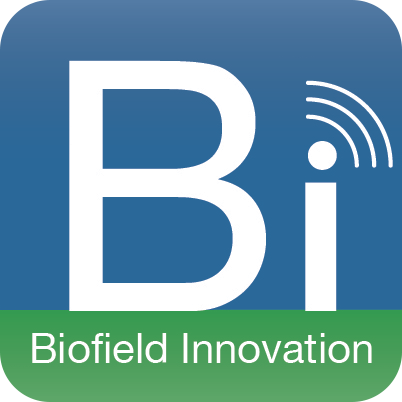Digital Therapeutics (DTx) are therapeutic interventions indicated for a specific disease and designed to modify the behavior of a patient in order to improve the outcomes of his disease.
In particular they are:
- developed through randomized and controlled clinical trials;
- authorized for use in clinical practice by regulatory bodies;
- subjected, when necessary for reimbursement purposes, to HTA assessments;
- reimbursed in some cases by public health services, such as in England and Germany, or by insurance companies;
- prescribed by the doctor (although some therapies that meet these criteria can be offered to the patient directly by the manufacturer, as in the case of over-the-counter drugs).
What differentiates Digital Therapeutics from drugs (the description common to both technologies may appear up to now) is the active ingredient, that is the element of therapy responsible for the clinical effect (both favorable and unwanted): chemical or protein molecule in the of the drug, an algorithm in the case of digital therapy.
Digital Forms
The active ingredient of a chemical drug is a substance that in order to be used by the patient must take a pharmaceutical form: tablet, vial, cream.
Similarly, an algorithm must assume a form capable of interacting with the patient in order to be used by the patient. This form can be, for example, an app that can be used via a smartphone, a video game to be used with a console, a sensor to be used with a breath medication inhaler, and so on.
The choice of the most appropriate pharmaceutical form depends both on the characteristics of the patient (adult, child, elderly) and on the therapeutic indication.
Mode of Action of Digital Therapeutics
Digital Therapeutics can operate in 2 ways, i.e. independently of the drug and/or therapeutics or integrated with the drug.
In independent or standalone mode, Digital Therapeutics typically deliver Cognitive Behavioral Therapies (CBT) or other psychotherapy interventions (motivational interview, psychoeducation and others). CBT is a form of psychotherapy based on the assumption that there is a close relationship between thoughts, emotions and behaviors and that therefore by working on thoughts it is possible to change behavior. In these cases, it is a question of modalities for providing therapy models that already exist and have been used for years in the traditional relationship between therapist and patient.
Alongside the use of existing therapeutic interventions, newly designed interventions can also be used.
In integrated mode, Digital Therapeutics operate as a drug Plug-in, extending its function and interaction with the patient. In the case of chemotherapy for the cancertreatment, for example, digital therapy through the management of symptoms associated with the disease and therapy, has been shown to be able to improve the patient’s overall survival.
Active Digital Ingredient
It is the responsibleelement for the clinical effect, both positive (clinical benefit) and negative (side effect). Itrepresents the entire flow of activities that are carried out from the first meeting with the patient to obtain the improvement of health outcomes:
- preliminary request for information on the state of health;
- analysis of the patient’s responses;
- provision of information on the disease and therapy to the patient;
- daily collection of information from the patient on his/her state of health;
- presentation to the patient of the progress of the therapy;
An active ingredient can be used:
- available in scientific literature (for example a well-established Cognitive Behavioral Therapy). In this case, Digital Therapy becomes an alternative method of providing a known treatment;
- created from scratch, using different therapy modalities, as in the case of daVinciDTx01 for the treatment of depression. This candidate therapy uses elements of Cognitive Behavioral Therapy, Motivational Interview and Psychoeducation elaborated on the basis of the experience of the patient, the caregiver, the specialist doctor and the family doctor.
Digital excipients
The purpose of the excipient is giving shape to the active ingredient and promote its intake, making it as digitally bioavailable as possible.
In the case of Digital Therapeutics it includes:
- forms for patient rewarding;
- reminders for taking digital therapy and complementary therapies;
- forms to connect the patient with their doctor and with other patients with the same indication;
It can therefore be hypothesized that the same active ingredient may have a different therapeutic effect depending on the digital excipients contained in the digital therapy, which can make it more or less bioavailable to the patient.
Therapeutic indications
Digital Therapeutics can be used for the treatment of numerous diseases. Below is a selection of those approved and under development as prescription DTx:
- depression;
- substance abuse addiction;
- opiate substance addiction;
- obesity;
- adverse reactions from antineoplastic drugs;
- ADHD;
- autism spectrum disorders.
Also considering non-prescription DTxs, there are additional indications such as:
- insomnia;
- asthma and COPD;
- hypertension;
- diabetes mellitus.
Digital Therapeutics and Pharmacological Therapy
Compared to drug therapy, digital therapy with the same indication can:
- replace drug therapy;
- be added to the patient’s previous or newly prescribed drug therapy;
- be developed together with a specific drug as a Combined Pharmacological – Digital Therapy.
In this last case the confirmatory clinical development of Digital Therapy occurs in combination with a specific drug and the results emerging from this development can be referred exclusively to this combination and are not transferable to other compounds, albeit similar.

